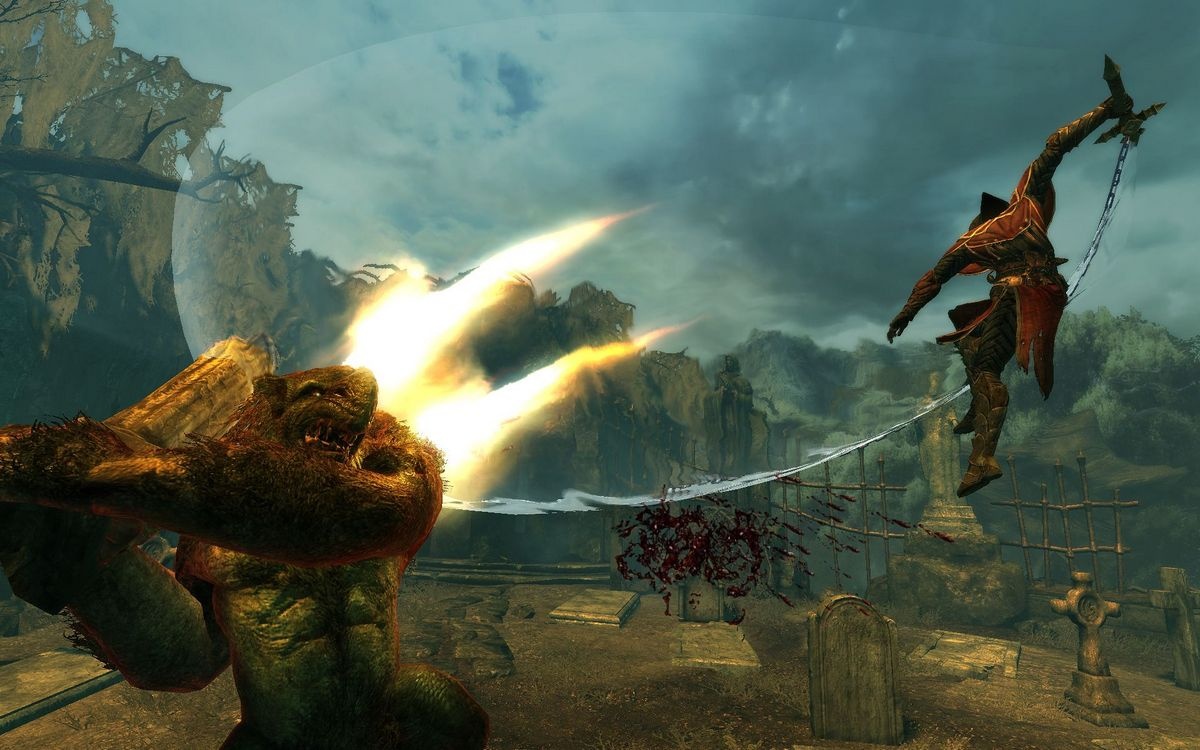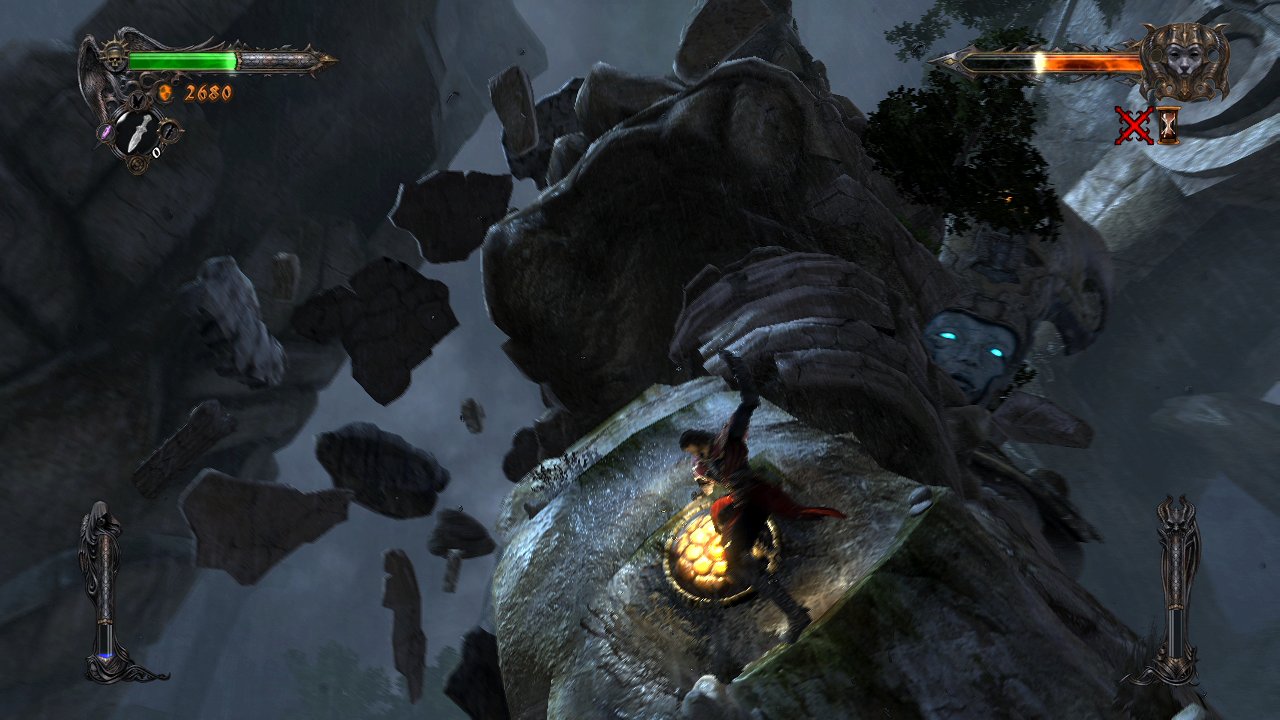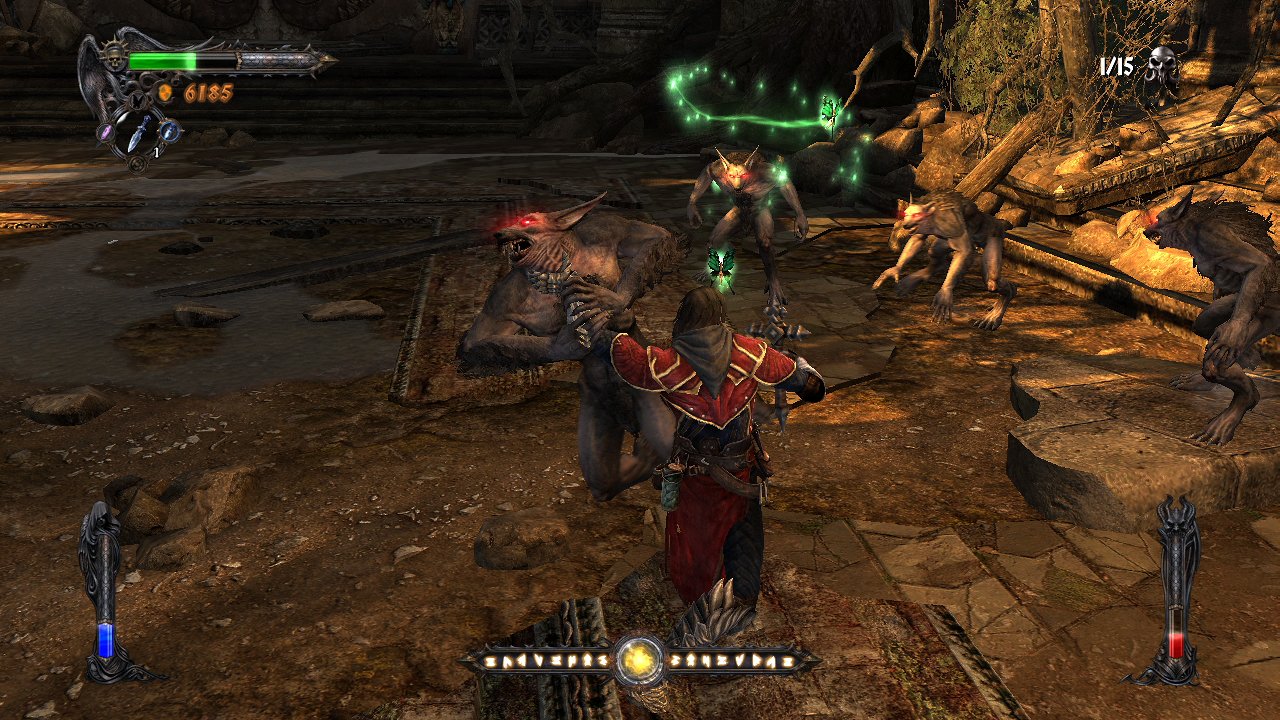Castlevania: Lords of Shadow Hands-On
We go Titan-climbing with Gabriel Belmont in Castlevania's first 3D outing on current-generation consoles.
When Hideo Kojima unveiled Lords of Shadow last year, he described shifting Castlevania development away from Japan as a means to make the series "more appealing [to an international audience] in the years to come." Development duties, he revealed, had been given to Madrid-based MercurySteam, making Lords of Shadow doubly notable; this is also Castlevania's first foray into 3D for the current console generation. How the prolific franchise has been "reborn" for Western markets won't be fully clear until the October launch, but playing through the first two chapters offers strong hints.
This is a 3D action game in the same vein as the PlayStation 2's Castlevania: Lament of Innocence, with familiar Castlevania elements remixed into a third-person hack-and-slasher. But between the PS2 game and this one are seven years of progress, years that notably included the whole God of War series and its various imitators. Lords of Shadow borrows from these and more, drawing on diverse sources, though none more plainly than 2005's Shadow of the Colossus. That game's Colossi have been drafted in as Titans, enormous stone guardian bosses with glowing magical weak spots, of which more later.
The game's hero, the Robert Carlyle-voiced Gabriel Belmont, is a knight of an ancient brotherhood. He rides out in an 11th-century, medieval fantasy Europe that suggests Van Helsing meets Lord of the Rings. It's the End of Days, or so say the pitchfork-waving peasants, with the world plagued by monsters and divine intervention nowhere to be seen. "A storm is coming," concurs narrator Patrick Stewart, who could do gravitas while reading the phone book. Belmont has specific worries, though; his wife has been murdered, her soul caught up in the supernatural conflict and trapped in limbo.
From the first level of the first chapter, a combat tutorial, the Castlevania staples are reassuringly present. Belmont fights with the combat cross, an ornate cross relic with a retractable iron chain--the traditional whip, in effect, for lashing enemies and, later, swinging and climbing. His first foes are equally traditional: werewolves and giant werewolves (lycans and wargs, if you please). Though neither castles nor vampires figured in our extended demo, we're promised they are in the game--somewhere around chapters six and seven of an ample 12-chapter, 20-hour experience.
The environments of the first two chapters, each split into many smaller levels, have a good deal of variety. We proceeded from the tutorial's rain-lashed village besieged by werewolves, through spooky woods, poisonous swamps, graveyards, and underground caverns, on to a lush, near-exotic forest, with hanging vines and waterfalls, a huge frozen lake, and the labyrinthine ruins of a long-dead civilisation. In contrast to the rich, elaborately drawn environments, the paths through them are mostly straightforward and linear, with the odd detour to access a health font or a chest holding an upgrade.

Beyond the snarling werewolves, we did battle with grenade-tossing goblins, giant spiders, gremlins, and trolls--a decent, if conventional, mix of enemies. We're counting on more outlandish nasties later in the game, further along the difficulty curve, and preview screenshots seem to bear this out. The by-the-numbers fantasy monsters, at least, throw the striking Titan bosses into sharp relief. These are the Shadow of the Colossus-like colossi: rocky, ancient, golem-like giants, invulnerable to Belmont's combat cross but felled with a good stabbing in their mystical glowing weak spots. We met the first of them towards the end of the first chapter on an enormous frozen lake--the Titan wading waist-high while we were on the icy surface, dodging blows from his huge stone fists. The Titans must be traversed as much as fought; we rappelled up the Titan's arm while his fist was stuck in the ice, climbed the carved ledges on his arm, and then used the combat cross's chain to swing and clamber to each of its weak points in sequence. We had to hold a button to grip when it tried to shake us off, and dodge out of the way when it tried to grab us, but there's no limited stamina for gripping as in Shadow of the Colossus; you can hang on indefinitely, which takes some of the urgency out of the fight, but also some of the frustration. Similarly, the generous checkpointing doesn't ask you to redo the weak spots you've already destroyed.
Outside of the Titan fights, combat is the stuff of classic action games: a mix of direct and area-of-effect attacks with the cross's chain, mixed with the jump for flashier combos, which are picked up and upgraded over time. The aerial moves are the most fun, letting you whisk enemies aloft as you jump and lash them in the air around you. Dead enemies drop daggers, which are required for Belmont's secondary, ranged attacks. Button bashing, as ever, will get you so far, but blocking and dodging are key at any difficulty beyond the easiest setting, Esquire. (Warrior and Knight are available on your first play-through, with Paladin locked at first.)
Action game tropes are plentiful: there are fonts to top up Belmont's health and magic reserves and medallions which, when filled with collectable gems, permanently increase health and magic capacity. Weapon upgrades collected at regular intervals add to the combat cross, in one case adding a hook to the chain, turning it into a grappling hook gun for swinging and rappelling, and in another case adding spikes to the chain, letting us saw through obstacles. Killing enemies, meanwhile, gives experience points to be sunk into combat move upgrades.
The magical power-up system was introduced halfway through our demo; Belmont gets a light meter and a shadow magic meter, which must each be filled with neutral magical orbs. These are collected by filling up, in turn, the combat focus meter, which rewards you for fighting with varied attacks and dodging those of enemies; this adds another strategic layer to the combat system, dissuading button mashing further still. Once a magic meter is full, the light or shadow mode can be activated; these are, respectively, a purple, electrical-looking aura that heals Belmont as he fights, and a red, fiery aura that increases his attack power.
The first hours of Lords of Shadow suggest a game with plenty up its sleeve. If it's prepared to follow through on its gradual learning curve and increasingly creative enemies and environments, we'll have an action game to stand alongside the best of them--not to mention a Castlevania game to do the series proud, "reboot" or no. Time will tell, on that count, but Kojima's stamp of approval, as the game's executive producer, should calm the nerves of Castlevania devotees. They, like us, will be waiting until October to lay eyes on Lords of Shadow's eventual castles and vampires.
Got a news tip or want to contact us directly? Email news@gamespot.com


Join the conversation